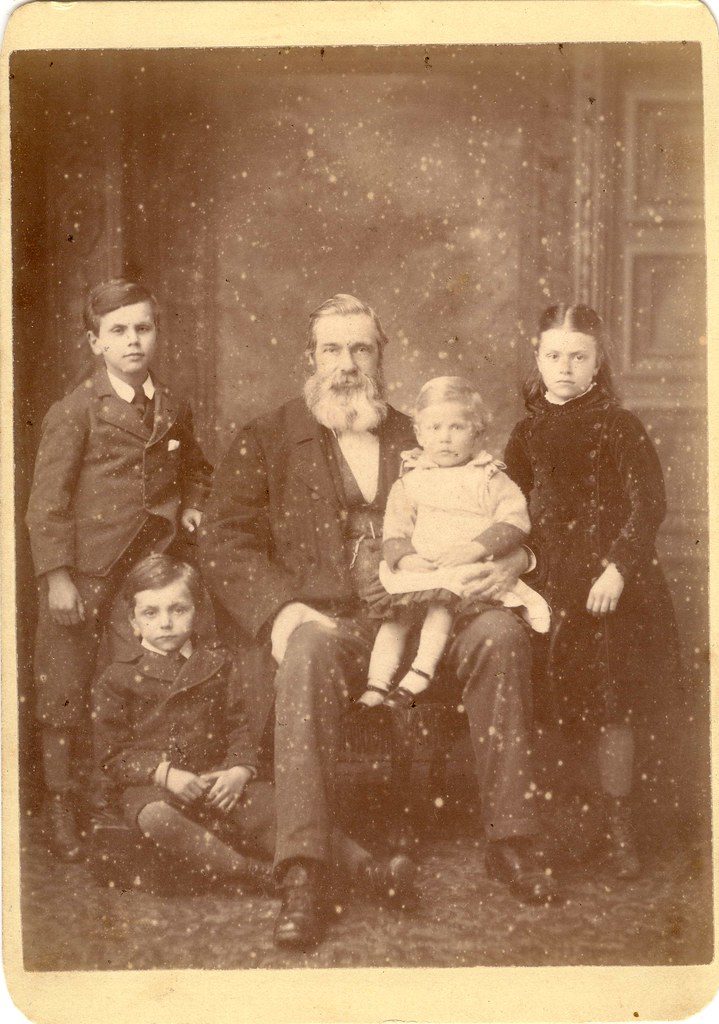Thomas Raymont (1864-1949): Home and Family Continued
In my previous post regarding Thomas Raymont’s home and family life I concentrated on the aspects of his childhood that he divulged to his reader, which dealt more in facts and figures than emotional outpour. In this blog post I will look into Thomas’ family life as an adult, and his relationships with his two wives and his children from both marriages.

‘Here I must interpose some account of my domestic life during these years.’
When taking a brief respite from details of his academic life and works, Thomas almost seems apologetic to have to interrupt these descriptions with an outline of his domestic life. Thomas only offers a paragraph to detail his relationships with his wives, who he only names as his ‘first’ and ‘second’ wife, and his children from those marriages. Through research of Thomas’ ancestry I found that his first wife was Constance Annette Backer, who he describes only in the sentence ‘Our marriage took place in 1893, but ended with her death in 1899.’ (pp.14) He only details of his childen with Constance that ‘We had three children, two girls who bear the names Dorothy Annette and Constance Elizabeth, and a little boy, Arthur, who died of pneumonia.’ (pp.14) From researching Thomas’ ancestry I found that Arthur died at aged around ten when his sisters were of the age of around twelve and fourteen respectively.
His second marriage was to a lady named Christine Morton of whom he writes ‘Two of our children, Alison and Joan, are in the land of the living, but their brother Tony, who had obtained a University Commission at Oxford and joined the army, gave his life for his country in the spring of 1940.’ (pp.14) From this we can gather that Thomas’ son Tony died during the Second World War which is a contrast from the losses that Thomas has had previously in his life with many of his siblings and also his son Arthur dying from illnesses which the treatment of the time could not save them from. Thomas’ words in describing his son Tony’s death have sentiments of pride in his sons willingness to fight for his country, opting to use the words ‘gave his life’ to describe his death, which connote that Thomas feels his death was not in vain and differing from the deaths in his family he has seen previously.
We could read Thomas’ memoir and feel that for a man who has lived a life of over eighty years that the omission of emotional responses to the deaths of family members comes across as unsympathetic and distant, but this is not unusual in these types of memoirs as David Vincent notes that ‘Love, grief and above all sexual activity are not necessarily verbal, let alone written categories of experience; you do not need to be able to read and write to make love or to fall in love, equally you do not need words to feel grief, or even to give some expression to that grief.’ (Vincent, 1980, pp.227) This could go a long way to explaining the lack of emotional details as Thomas arguably felt uncomfortable talking of the loved ones in his life, whether that be the romantic love that he had for his wives or the fatherly love he had for his children, and the undoubted grief that he would have felt in losing family members was not something he was able to recreate in his writing due to the customs of the time on how a person should behave.
Bibliography
Raymont, Thomas. ‘Memories of an Octogenarian 1864-1949’, Burnett Archive of Working Class Autobiographies, University of Brunel Library, Special Collection, 1:571, available at: http://www.brunel.ac.uk/__data/assets/pdf_file/0003/139278/BurnettArchive.pdf
Vincent, David. ‘Love and Death and the Nineteenth-Century Working Class.’ Social History, 5.2 (1980): 223-247
Ancestry Thomas Raymont [Online]
Available at:
[Accessed 15th April 2019]
‘Family Portrait by William Page 1880’, in
Flickr < >
[accessed 12 April 2019]

Leave a Reply